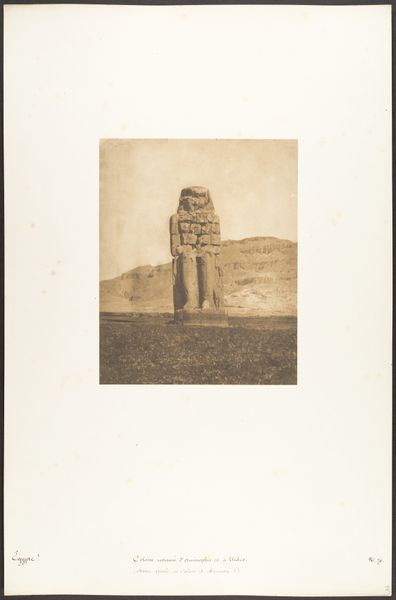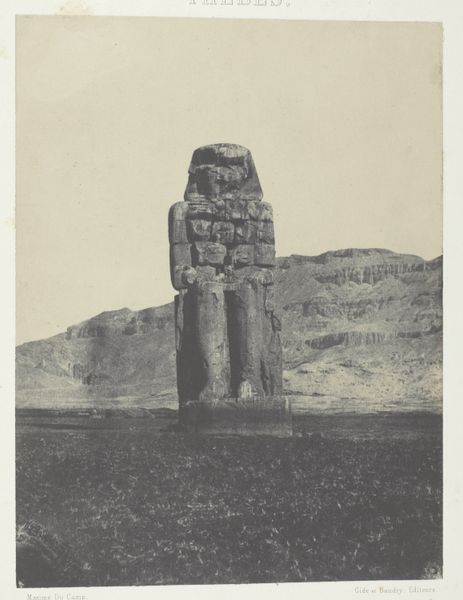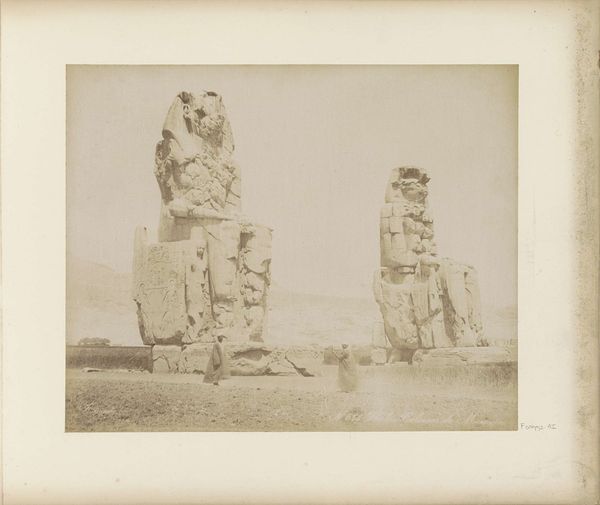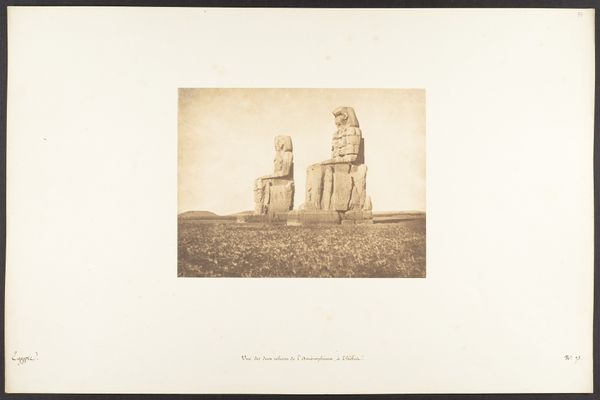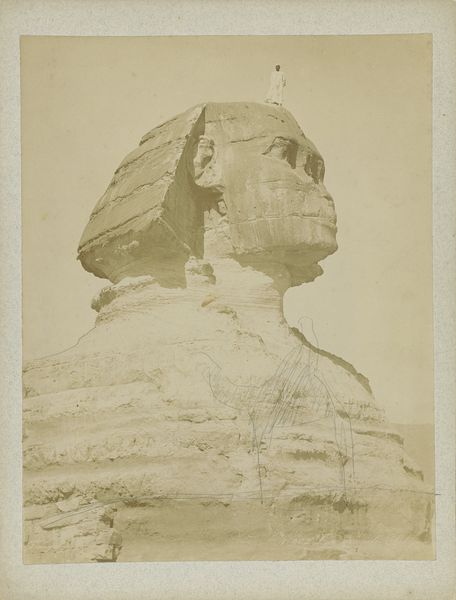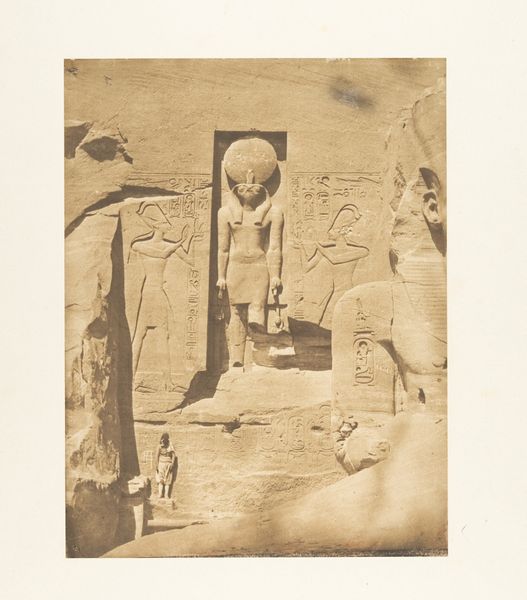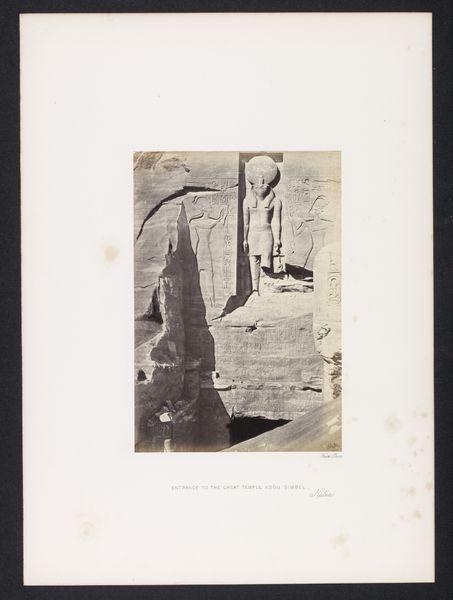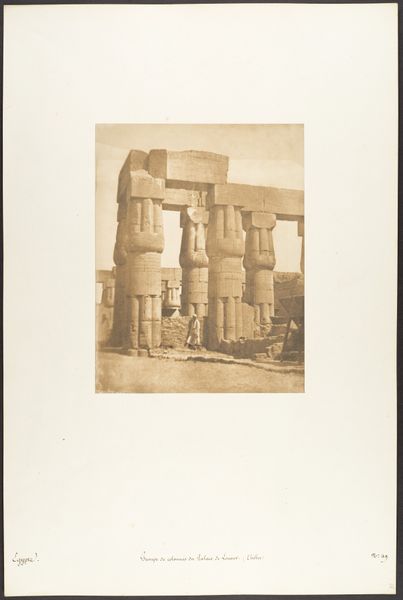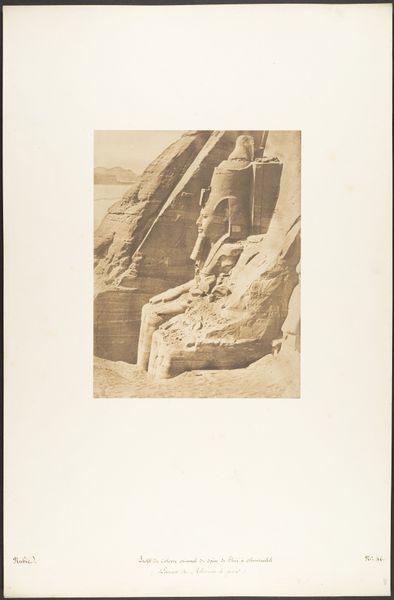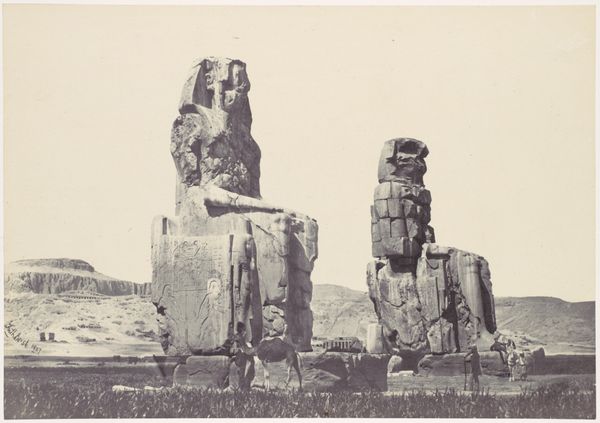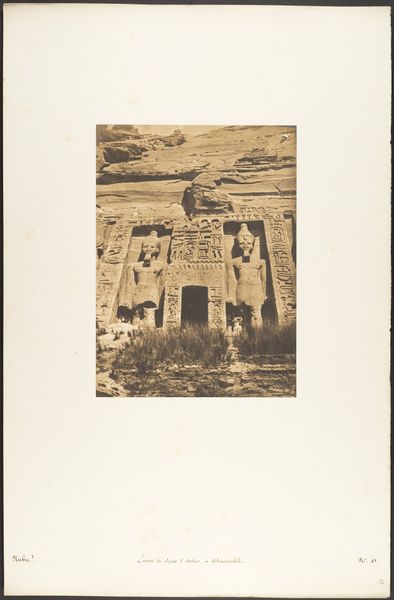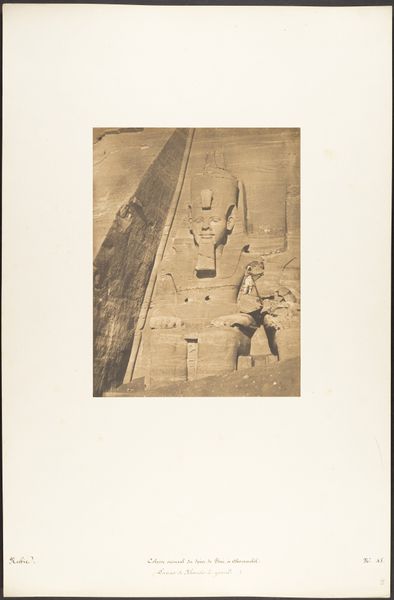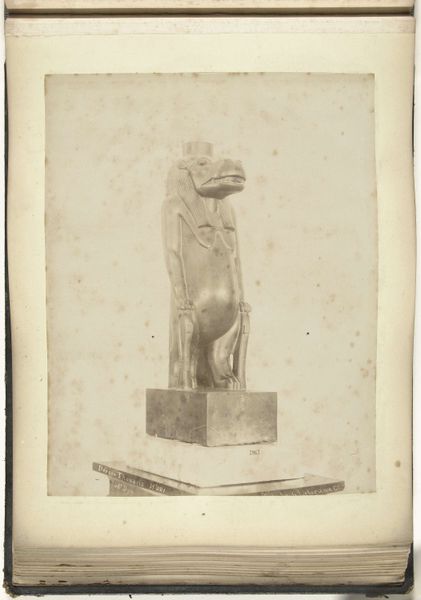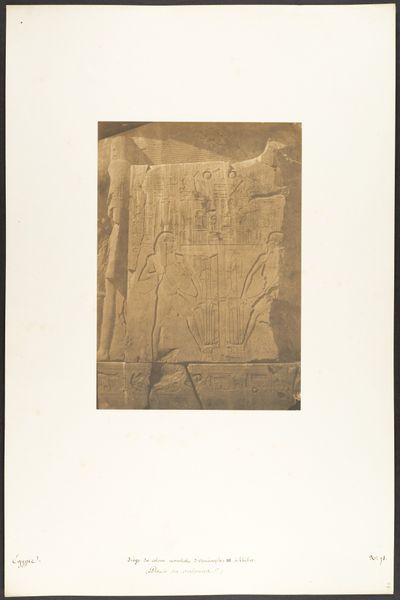
Colosse monolithe d'Amenophis III, à Thèbes 1849 - 1850
0:00
0:00
photography, sculpture, gelatin-silver-print
#
landscape
#
ancient-egyptian-art
#
photography
#
ancient-mediterranean
#
sculpture
#
gelatin-silver-print
#
history-painting
Dimensions: Image: 7 11/16 × 6 1/4 in. (19.6 × 15.9 cm) Mount: 12 5/16 × 18 11/16 in. (31.2 × 47.5 cm)
Copyright: Public Domain
This photograph by Maxime Du Camp captures the Colossi of Memnon in Thebes. Shot in the mid-19th century, it’s not just a record of ancient monuments; it's a product of its own time, reflecting the rise of Egyptology and the West’s fascination with ancient civilizations. Du Camp was part of an early wave of photographers documenting Egypt, armed with new technologies that allowed for unprecedented visual detail. The stark desert light, the crumbling grandeur of the statues – it all speaks to the power dynamics of the era. European scholars and artists were flocking to Egypt, often with the backing of colonial interests, eager to uncover its mysteries. This image then becomes part of that story: the Western gaze shaping the narrative of a non-Western culture. To truly understand this photograph, we need to consider the colonial context, the history of archaeology, and the evolving role of photography in shaping perceptions of the world. Only then can we appreciate the complex layers of meaning embedded in this seemingly simple image.
Comments
No comments
Be the first to comment and join the conversation on the ultimate creative platform.
